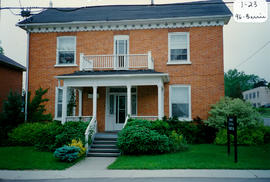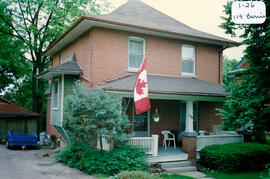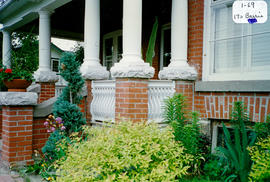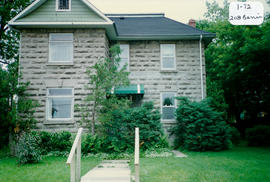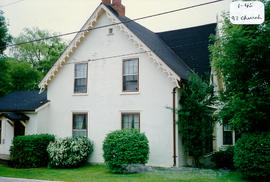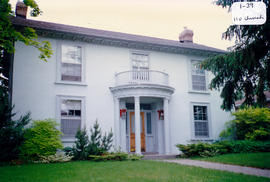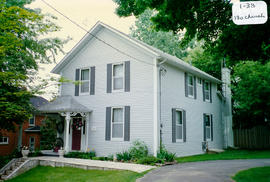88 Barrie Street - The Nesbitt House
- CA BWGPL GJ-HB-2017-03-10-04
- Item
- 1996
Part of George Jackson fonds
The Nesbitt House is located mid-block on the west side at 88 Barrie Street. The two-storey, ‘L’-shaped building with a hip roof was built around 1920 in the Eclectic Edwardian style. The shallow, two-storey bay with a wide projecting gable roof is a classical, pediment-like form. The porch roof and balcony above are supported by rectangular colonnettes on brick piers. Other Edwardian features are the large, double-hung windows with shorter, upper-sash windows that are proportioned to resemble rectangular transoms. The wood-shingle texture at the exposed gable is an Italianate feature and the roof curb is reminiscent of an Italianate motif. There are precast lug sills and column bases. The house has load-bearing, brick masonry construction, a stone foundation, and painted-wood porch details. According to the 2000 inventory, the house has been maintained well. (1, 3)
George Jackson


